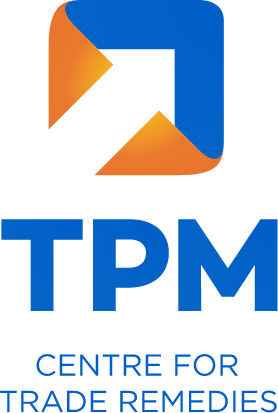Product description: The product under consideration is ‘industrial laser machines’, in fully assembled, SKD or CKD forms with the power of the laser ranging from 3W to 40kW, depending on the end-use. Components and all other laser machines used for the purposes other than the above are excluded from the scope of product under consideration.
HS Codes – The product is classified under chapters 84, 85 and 90 of the Customs Tariff Act, 1975 and is imported under codes 84561100, 84569090, 84622920, 84798999, 85152190, 85158090, and 90132000. The custom classification is only indicative and is not binding.
Uses: The product is used for cutting, marking and welding operations on metal and non-metal surfaces.
Countries involved: China PR
Applicant: Sahajanand Laser Technology Limited
Date of initiation: September 29, 2022.
Period of investigation: April 1, 2021 to March 31, 2022.
Injury period: 2018-19, 2019-20, 2020-21 and the period of investigation.
Margins and proposed duty: The proposed duties for different exporters range from 20.82% to 135.98%, with the latter being the residual duty on non-cooperating exporters. Two exporters also received nil duties.
| Producers | Dumping Margin | Injury Margin | Proposed Duty |
| GD Han’s Yueming Laser Group Co., Ltd., Han’s Laser Smart Equipment Group Co., Ltd., Han’s Laser Technology Industry Group Co., Ltd., Han’s MP Laser Technology Co., Ltd. and Suzhou Songu Intelligent Equipment Co., Ltd. | 30-40% | 20-30% | 22.78% |
| Jiangsu Yawei Machine- Tool Co., Ltd. and Jiangsu Yawei Chuangkeyuan Laser Equipment Co., Ltd. | 50-60% | 40-50% | 40.05% |
| TRUMPF (China) Co., Ltd. and Jiangsu Jinfangyuan CNC Machine Co., Ltd. | (30-40%) | (40-50%) | Nil |
| HSG Laser Co., Ltd and Jinan Hongshi Laser Technology Co., Ltd | 50-60% | 20-30% | 20.82% |
| Bystronic (Tianjin) Laser Ltd, Bystronic Laser AG and Bystronic (Shenzhen) Laser Technology Co., Ltd | 30-40% | 20-30% | 27.86% |
| Jinan Bodor CNC Machine Co., Ltd | 130-140% | 70-80% | 77.80% |
| Jinan Oree Laser Technology Co. Ltd and Shandong Oree Laser Technology Co. Ltd | 100-110% | 80-90% | 80.65% |
| Gweike Tech Co., Ltd | 110-120% | 80-90% | 81.52% |
| Residual | 160-170% | 130-140% | 135.98% |
Key findings:
- Laser cutting, welding, or marking machines are essentially machines which have laser source as the base product and which perform the function of emitting laser required for cutting, welding, marking or any other operations.
- The machines are produced in many sizes to accommodate different sizes and type of objects. The object may be of varying size. Depending on the size of the object, the product is supplied in different bed sizes.
- Irrespective of product perform three different functions, it does not render them as three different products. All of them perform the same essential function of emitting laser light in a controlled manner. The Authority has considered different kinds of laser machine as one product. This is despite the contention of the Interested Parties that production costs and selling prices may vary significantly based on the type and size of the machine.
- Components have been excluded from the scope of the product under consideration. However, if components were transacted in such a manner that requires simple assembly of the parts resulting in industrial laser machine, it would be considered as a CKD version of the machine and would be included in the product scope.
- The Authority has only considered those products within the product scope, which are either produced by the domestic industry or the domestic industry has the capability to produce them.
- The other interested parties alleged the existence of more domestic producers. The Authority sent communication to other producers. Only one other producer has responded to the said communication. However, the data provided by the other producer did not reconcile with its annual reports and therefore, the other producer could not be considered within the scope of domestic industry.
- The production of SEZ units has not been considered in the determination of total Indian production by the Authority.
- It was also alleged that the Applicant is an importer of the goods and therefore does not qualify as a domestic producer under Rule 2(b) of the ADD Rules. However, the Authority held that the volume of imports by the Applicant was insignificant, and the other producer has processed the imported product before reselling them in the domestic market. Therefore, the producer can be considered eligible.
- More than 20 producers from China participated in the investigation but the Authority has not undertaken sampling and determined dumping margin based on individual exporters response.
- PCN identification could not be made in the DGCI&S transaction wise data. Therefore, for the purpose of price undercutting, the Authority relied only on the data of the participating producers.
- The dumped imports were also found to be significantly undercutting the domestic industry’s prices by 40-50%, leading to price depression on the domestic industry prices. .
- Due to the large market share commanded by the subject country, the subject imports were the price-setters for the subject goods in the domestic market. As a result, the domestic industry was forced to reduce its prices and suffered losses.
- None of the consumers have participated in the present investigation. Lack of participation means no adverse impact of anti-dumping duty. Additionally, the impact of anti-dumping duty on the user industry is minuscule.

